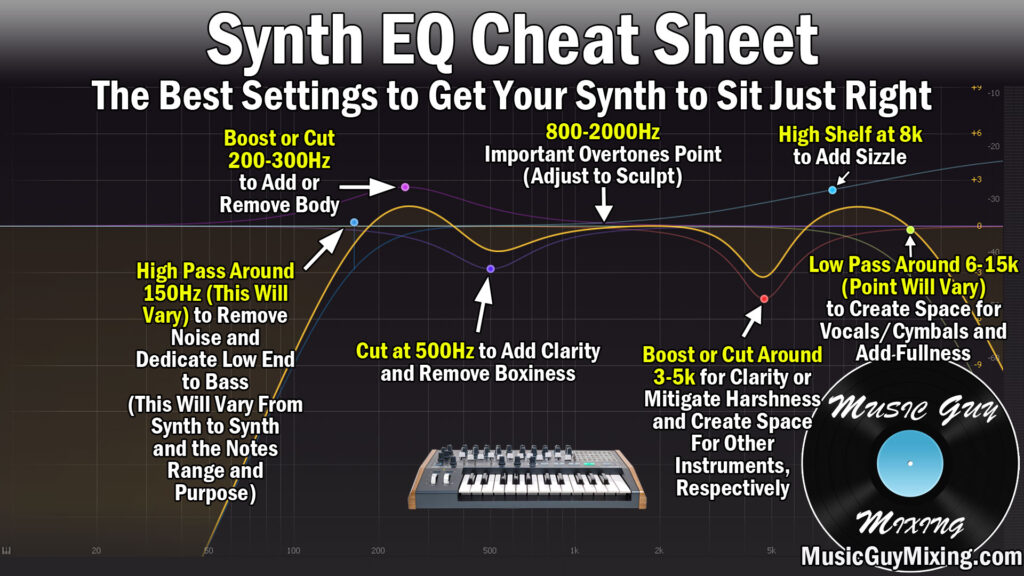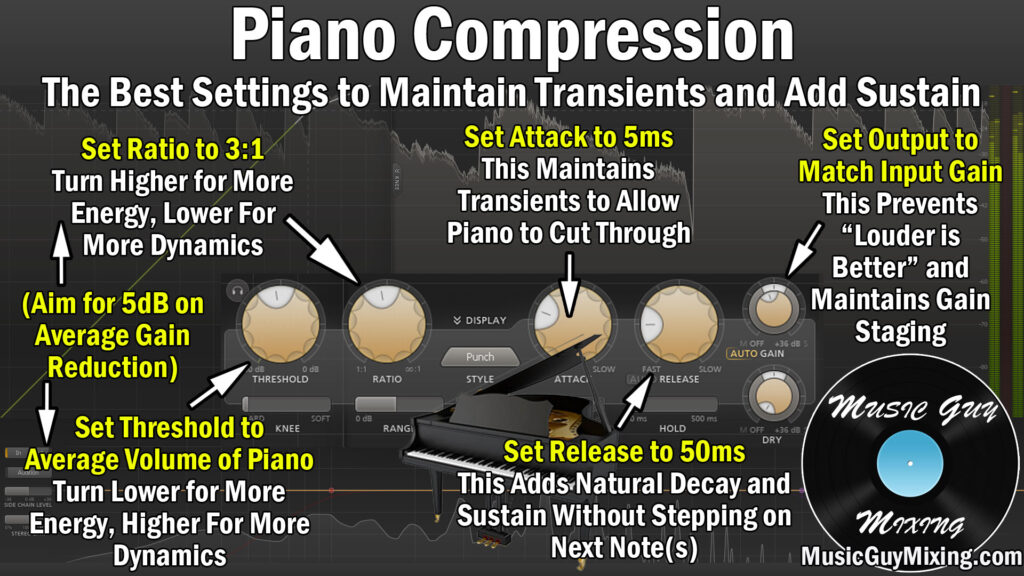Listening to the synths in your favorite songs and comparing them to your mixes, you might be wondering how to make synths sound fuller like in commercial mixes. There are a number of ways to make your synths fuller, all without having to change instrument itself. Let’s cover some pointers on how to make synths sound full in your mix.
How to Make Synths Sound Full
Here’s a few tips on how to make synths sound full in your mix.

Layered Octave
We’ll begin with an easy one. Whenever you want to make your synths sound fuller, try layering in the same part pitched an octave down.
Drop the volume or velocity on the octave part so that you can barely hear it and that thin synth part suddenly has a bit more meat to it.

This is one of those feel rather than hear additions, but if that octave sounds good then by all means turn it up.
This trick works better with some “flavors” of synths over others, but it’s worth giving it a try. You might try layering in an octave up, again at a relatively buried level, to further fill out the track.
Saturation
Whenever I’ve got a track which sounds too thin, I try some saturation. As I covered in my tutorial on what does saturation do, saturation adds harmonic distortion to the mid frequencies of your track.
These overtones above the fundamental frequencies of that synth fill out the sound by adding warmth via frequency information which didn’t exist before.
Drop a saturation plugin like Decapitator on your synth.
I like the “N” style setting as my starting point for most synths, filtering out a bit of the low end and high ends (more on this in a moment) via the filter knobs.
From there it’s a matter of adjusting the tone, drive, and even the wet/dry knobs to taste. Adjust the drive and wet/dry especially to find that sweet spot where you can hear that added fullness without any palpable distortion.
EQ
As I covered in my synth EQ cheat sheet, synths are surprisingly heavy in the mid-range frequencies. Sometimes we just need to bring these out a bit more.
While you can boost the mid-range, rolling off the non-musical low frequencies places a greater emphasis on that mid-range.

In the same vein, dropping a low pass filter on the top end places a greater emphasis on that mid-range. This results in a fuller sounding synth by way of subtractive EQ.
Most synths have these filters built in, and you rarely need the sizzle of that top end, anyway.
You might be surprised at how many commercial mixes featuring synth aggressively low pass their synths to leave that space for vocal air and cymbal sizzle.
Compression
Depending on how you record the synth or the instrument itself, even if it’s just a virtual instrument, compression can be used to get a fuller sounding synth.
My piano compression guide is relevant for a very transparent yet effective way to add some thickness and sustain to your synth by gently achieving a more controlled, thicker synth:

Most of the compression settings are pretty conservative. I like a ratio of 3:1, an attack of 5ms to maintain the punch of the top end transients of the synth, and a release of 50ms to give a little transparent decay to the compression.
Again, it’s very subtle but adds just a touch of added sustain and thickness to give you a slightly less dynamic but fuller synth sound. If you want to drive it a little harder, feed more signal via the threshold and a higher ratio to get an even thicker, albeit less transparent compression to dial in the thickness.
Chorus
Sometimes adding some subtle width is a great way to make synths sound fuller. This won’t apply to all mixes as you only have so much space to work with, but in the right context this works great for filling out the sound. Incidentally check out my audio panning guide to see where to prioritize space in the stereo field.
Getting back to synths, drop a chorus plugin (see what is chorus) or something like Microshift from soundtoys on your synth track (or even better, use it as a send) and blend in the width that you want.
Sometimes all your synth needs to feel more full is to nudge this up just enough until you start to feel it assert itself more in the space of the mix.
You don’t need to hear it so much as feel it; in fact if you start to hear that width you may want to back it off, depending on how busy your mix is otherwise.
Similar to the chorus, we can also add some delay to make our synth feel a bit fuller by way of width, but even more effective is reverb!
Reverb
Reverb adds depth and fullness to anything you in your mix, synths included.
I’m not suggesting you just drop a reverb on your synth. I’m also not suggesting you use the onboard reverbs which come with most synth instruments, analog or virtual.
Room reverb blended in via a send is a relatively short, clean, and realistic sounding reverb, making it perfect for our synths or any other track for that matter.
Using it as a send lets you pull from an aux/return track reverb which you can apply to multiple tracks to create a sense of cohesion.
I covered this in my tutorial on the best reverb settings, so refer to that to create a couple of reverbs for your entire mix, blend one or both in to your synth, and enjoy that added thickness.
Note that part of that process is using the Abbey Road Reverb trick to filter out the low mids and high frequencies, keeping that reverb clean. This nets you the mid and upper-mid range thickness without clogging up your mix.
There you have it – half a dozen methods for how to make synths sound full in your mix. Try one or a number of them together to get your synth sitting just right.
Tips for a Fuller Synth Sound
- There are a number of ways to make your synths fuller, all thankfully without having to change your instrument itself.
- Try layering the same part an octave down and turn the volume or velocity for the octave down so that you feel it as much as you hear it.
- Add saturation to add overtones which didn’t exist before to thicken out the mid and upper-mid frequencies above the fundamental.
- While you can boost those mid frequencies via EQ, you might be better off using the aforementioned saturation and instead filtering out the low and high frequencies with a high and low pass filter, respectively. This places a greater emphasis on the mid-range which makes the synth sound fuller.
- Use relatively conservative compression settings of a 3:1 ratio, attack of 5ms to keep transient punch, and a release of 50ms, aiming to achieve 3-5dB of gain reduction to get a thicker, more sustained synth sound.
- Make your synth sound fuller by way of width with a bit of chorus which multiplies the source and modulates the pitch and timing.
- Blend in a relatively short room-style and filtered reverb via sends to give your synths a little fullness with the added thickness and decay of the reverb.
